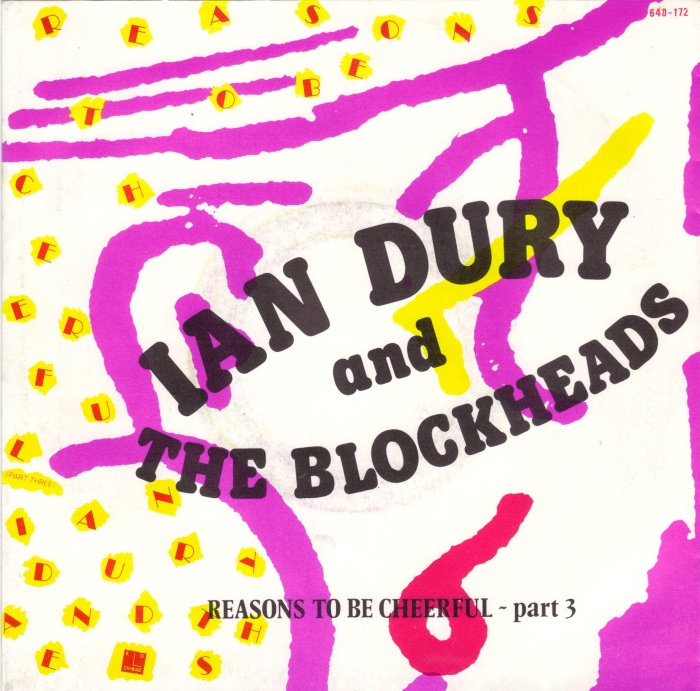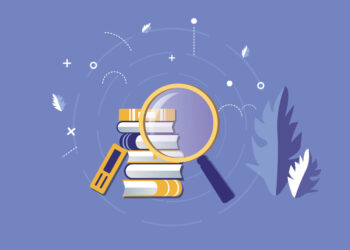 Back in 1979, British New Wavers Ian Dury and the Blockheads produced the single Reasons to be Cheerful (Part 3). The song was a celebration of sensory pleasures from music, comedy, food and beyond. Listening to this song recently, I was struck by its contrast with the tone of doom and gloom that exudes from the pores of publishers and librarians, and the need for a dose of optimism.
Back in 1979, British New Wavers Ian Dury and the Blockheads produced the single Reasons to be Cheerful (Part 3). The song was a celebration of sensory pleasures from music, comedy, food and beyond. Listening to this song recently, I was struck by its contrast with the tone of doom and gloom that exudes from the pores of publishers and librarians, and the need for a dose of optimism.
This song is subtitled “Part 3”, and you can’t help but speculate what happened to parts one and two. Did they ever exist, or is it just a part of the optimism that leads straight to part three? Here I describe one example of why we should be cheerful, leaving you to contemplate what Parts 2 and 3 should be.
Part 1: The Library
Some ask why academic libraries are needed in this day and age — when content is largely consumed online and stacks seem to do nothing but gather dust. Well, the reality is that the library is a vibrant place, mainly due to the libraries and people who sustain them. Yes, funds are not exactly falling from the skies, but academic institutions and publishers are increasingly recognizing that librarians have an indelible relationship with their academics, practitioners and students. The means of knowledge dissemination may be different in an electronic age, but the mission remains the same. In this realization lies a sense of optimism and innovation.
At the American Mathematical Society we publish math. We have strong relationships with math librarians across the globe, and contact like never before. At the recent Frankfurt Book Fair, it was wonderful to have the opportunity to talk with representatives from institutions around the world, including, for example, more than one representative from parts of Saudi Arabia. It was not always this way.
Math librarians, in our experience, have moved beyond the traditional roles of collection development for books and journals and are deeply embedded in the consciousness of their students and colleagues at math departments. It has been said that “librarians are the original search engine”. Librarians help their stakeholders understand how to navigate and find content, enhance faculty’s ability to do their work by integrating information into workflows, teaching, mentoring and encouraging students to discover a world of scholarship that might otherwise appear daunting. In other words, librarians are a part of, and indeed more than, faculty.
Libraries are now faced with interpreting how technology may be applied to content in ways that serve faculty and students most effectively. While publishers certainly do have much more direct contact with end users than ever before, so do librarians, and their mediation and expertise allows for greater understanding in a sea of complex information that often is not just subject specific, but interdisciplinary. In some ways the business of publishing now relies on libraries to help translate their world – a world of complex copyright issues, and intellectual property, a world of high tech tools, a world where an important component of scholarship is enabling access for a range of end users.
A fascinating example may be seen in the creation of “makerspaces” in many academic and public libraries in the USA. Camille Salas, an Association of Research Libraries (ARL) Diversity Scholar and librarian at National Public Radio, wrote a fascinating piece on this issue in Synergy Issue 11, September 2014 (News from ARL Diversity Programs). She describes how libraries have created spaces within the library that allow users to experiment with a range of tools including 3-D printers, laser cutters, and other electronic devices. These “makerspaces” have been created in the context of what is termed Universal Usability, allowing for such spaces to be use to serve the informational needs of individuals with disabilities.
An equally interesting report may be found in the ARL report entitled “New Roles for New Times: Transforming Liaison Roles in Research Libraries” (August 2013). The report explores a number of the different aspects of a librarian’s liaison role that I touch on above. Perhaps the key takeaway is this “Liaisons are playing two new roles, that of advocate and of consultant, but with an emphasis on campus engagement…”
So, what about Part 2, and Part 3? Let’s hear some more reasons to be cheerful — so we may all sing Ian Dury’s song in unison.
Discussion
2 Thoughts on "Reasons To Be Cheerful, Part 3"
Under reasons to be cheerful, since it’s Friday I want to nominate the John Coltrane recording of “My Favorite Things.” If life gets better than that, I haven’t experienced it.
The afternoon light on the trees in autumn, the juice of a ripe pear running down your chin, *Kind of Blue*, the *Goldberg Variations* . . .
Oh, was this supposed to be about scholarly publishing? How about this: There is now more science, available to more people, through more channels, than at any time in human history.


